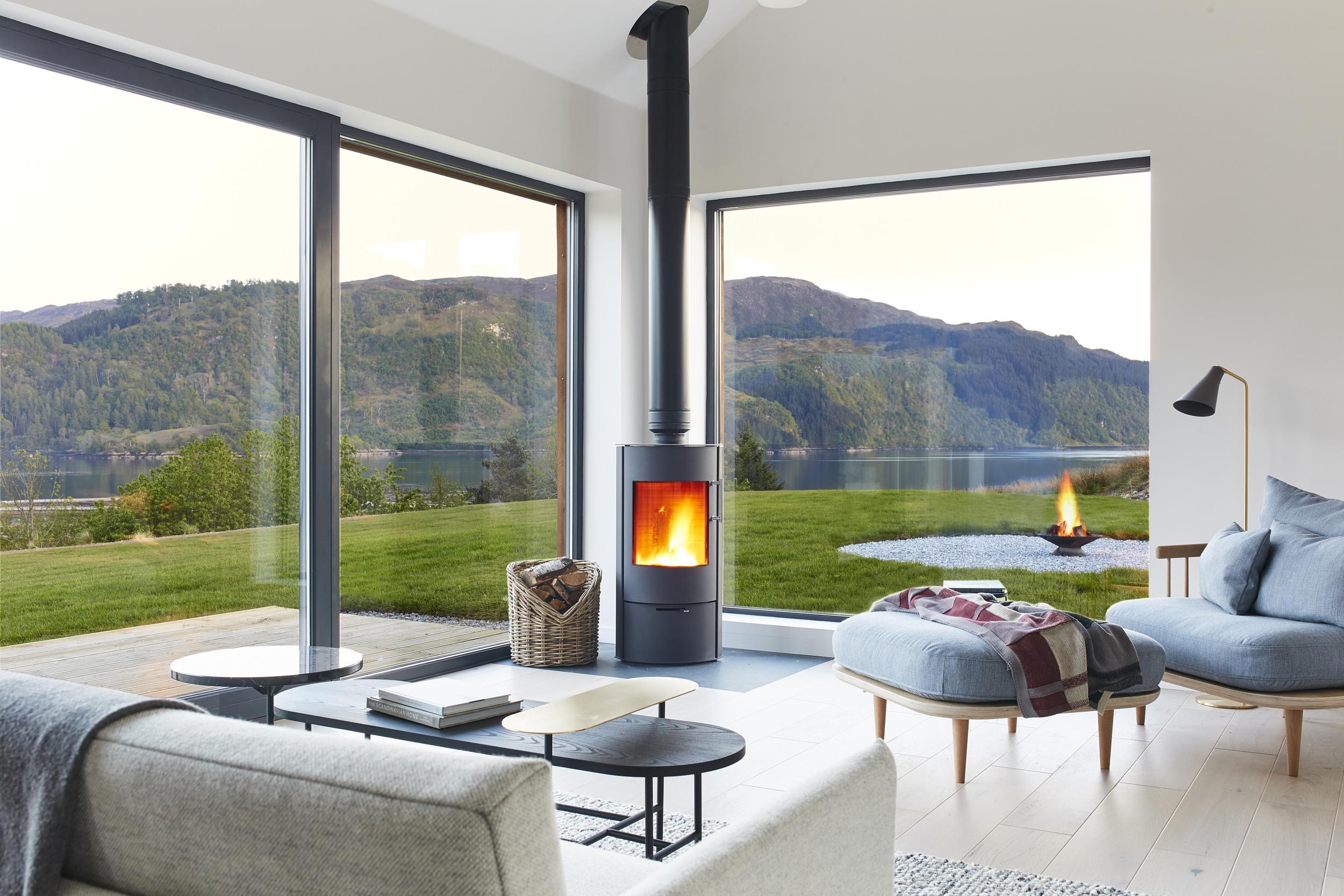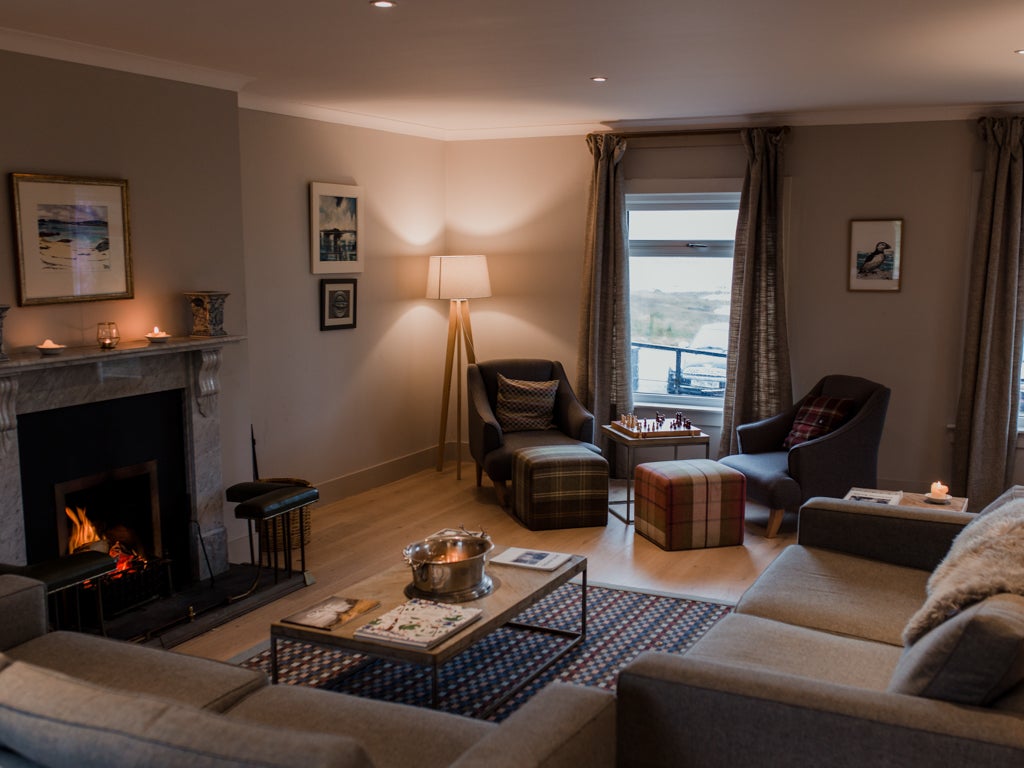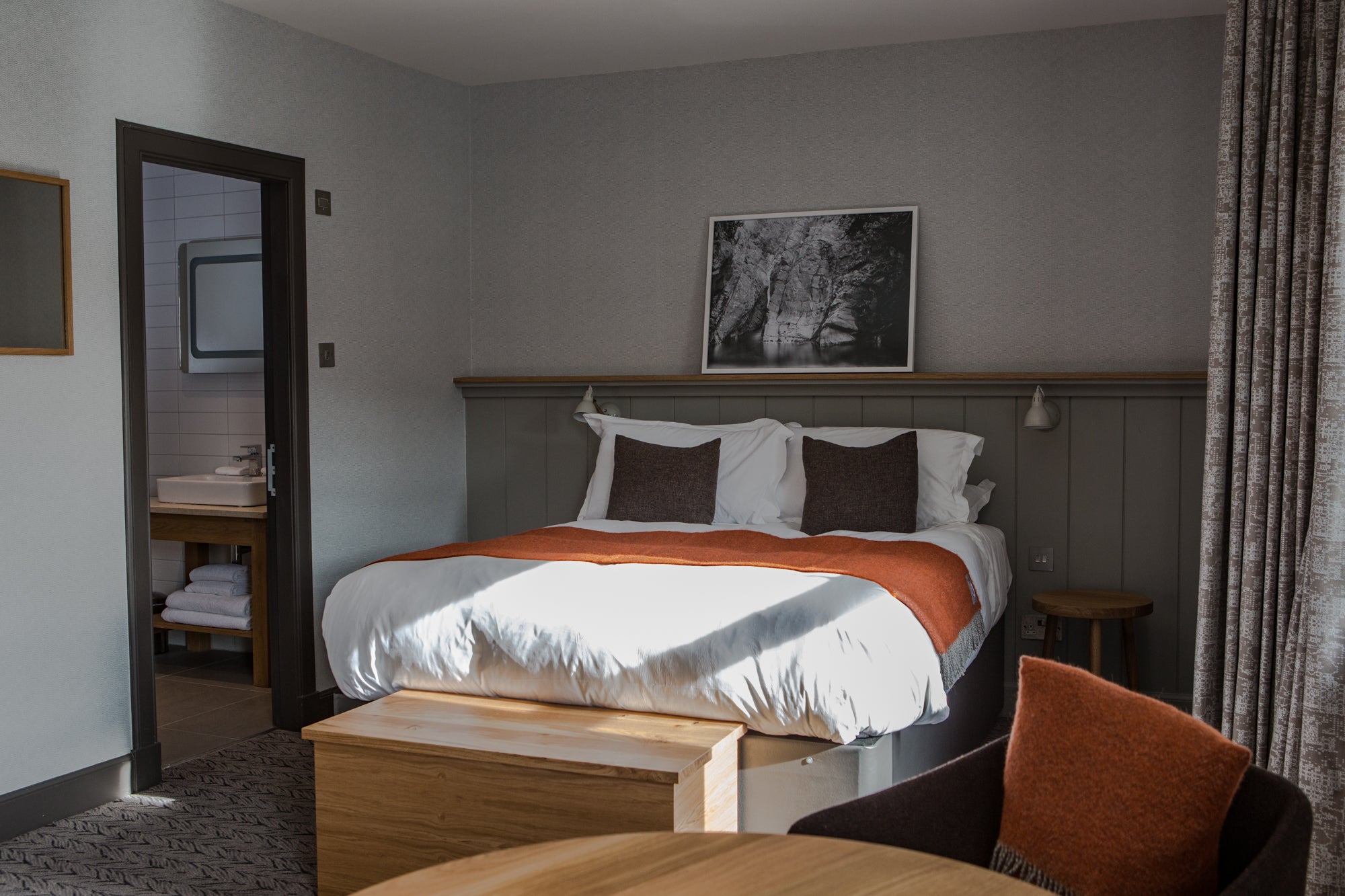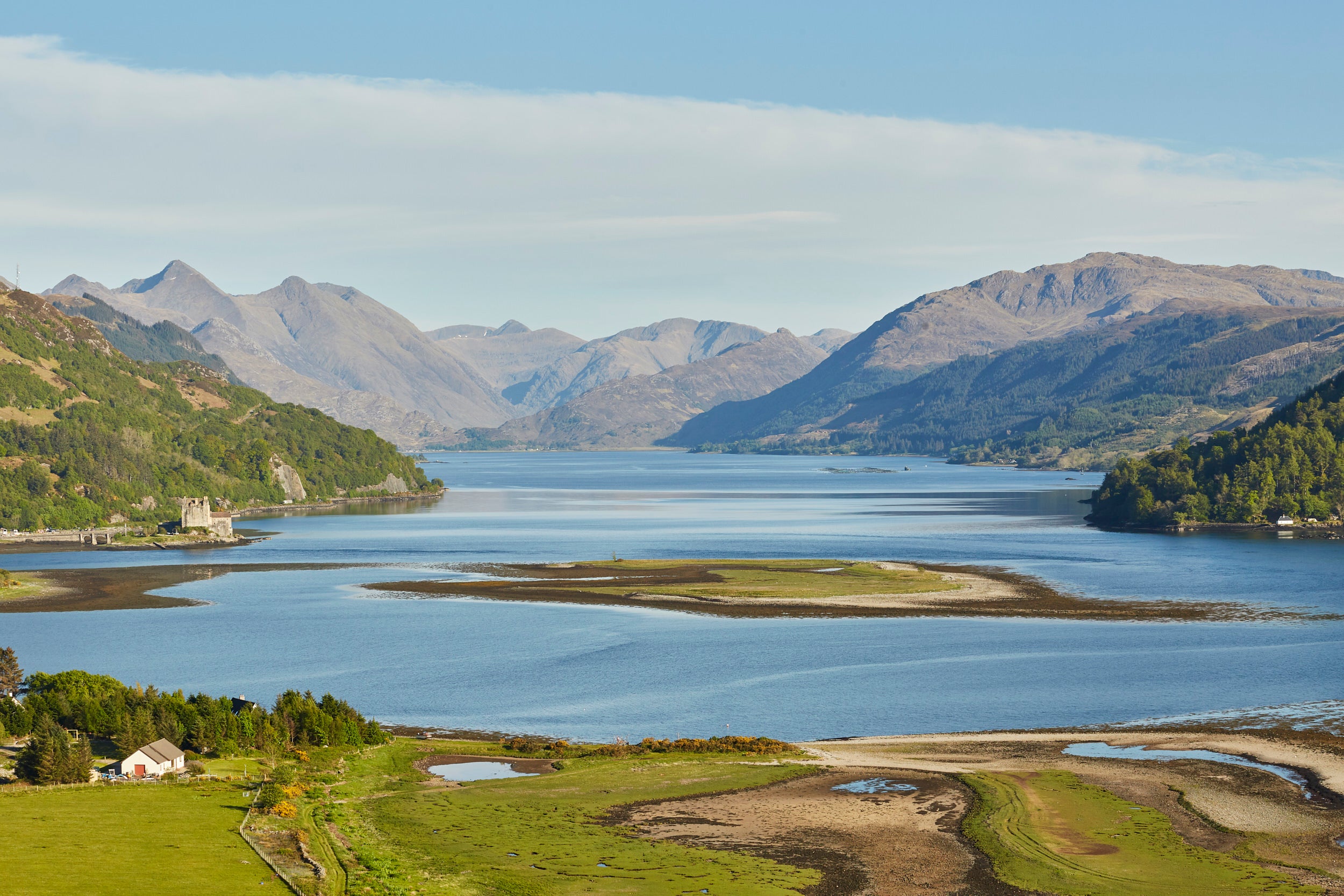How Scotland’s hotels are moving away from tartan and stag heads
Mark Jones finds almost 800 years after the Vikings fled Scotland, their influence is back with a vengeance


The one-storey, larch-clad cabin sits in a glade of silver birches overlooking a lake in a landscape of low hills. Inside, the strippers have been going wild: there are stripped pine floors and stripped, rough-hewn tables. There are also Sami-patterned rugs, soft grey furnishings and Ikea bucket chairs.
Sheer Scandinavia it might be, but we’re not on a Finnish lake, much less a Norwegian fjord. Hame Hotel* sits on a very Scottish loch in the northern part of Skye. The furnishings are by a proudly Scottish company, Anta.
It’s a newly-opened hotel that’s part of Scotland’s newly crafted aesthetic landscape. Anne Storm Holch Povlsen, the Danish wife of Scotland’s biggest landowner, calls it “Scandi-Scot”. Mumtaz Lalani of the luxury lodge 57 Nord calls it “Norse-Gael”. Scottish hotelier Gordon Campbell-Grey of The Three Chimneys calls it “McScandi”.
Whatever you call it, almost 800 years after the Vikings fled Scotland, their influence is back with a vengeance.
They come bearing not spears but mood-boards. And instead of burning villages they’re ripping out the tartan curtains and frilly lampshades. Or, as Mungo Laing, owner of Hame Hotel, puts it, “we don’t want to look like a biscuit tin any longer”.
Scotland’s biscuit tin aesthetic emerged in the 19th century. All the things that make Scotland such a touristic tour de force today – the bagpipes, the kilts, the golf courses, grouse moors, the acre upon acre of tartan swathing sofas, mugs, footstools, holidaying royals and, of course, shortbread biscuit tins – have their origin in King George IV’s visit to Scotland in 1822, expertly stage-managed by the romantic novelist Sir Walter Scott. The tartan kilt, a bling version of the real garment worn by the clans (and once banned by the English), was, suddenly, everywhere.
The Isle of Skye is an unlikely centre of the backlash. It’s heading majorly in the Scandi-Scot direction.

Beyond Hame Hotel is the restaurant-with-rooms The Three Chimneys, recently acquired by the aforementioned Gordon Campbell-Gray. Campbell-Gray, who founded chic, arty urban hotels One Aldwych in London and Le Gray in Beirut, was never going to do biscuit tin when he returned to his homeland. Sure enough, once past The Three Chimneys’ homely, whitewashed exterior, you encounter pale floorboards, art deco-luxe furniture – and maybe a thistle or two, albeit artfully displayed in an artisan glass bottle.
A less expected outpost of McScandi is The Bosville in Skye’s main town, Portree. It’s the kind of solid, plain inn where the boots of farmers and hikers have been muddying the tartan carpets for generations. But now the carpets look as if they belong in a Chelsea showflat; and the restaurant, Dulse and Brose, would give many a King’s Road brasseries a run for its money too.
But it’s in the self-catering, holiday-let sphere that the designers have decided to let the true north in.
I headed back across the Skye bridge, to Ardelve, and a property with a fine view across the loch to the Cuillin mountains.

“Fine” doesn’t quite cover it. If you could advertise a tour to Valhalla, the home of the Norse gods and heroes, you might well use the view from 57 Nord. But in the bottom left hand of your viewfinder, there’s an unmistakeable Scottish touch: the austere walls of the 13th-century Eilean Donan Castle.
The cabin is definitely the luxe side of the Nordic-Gael thing. Owner Mumtaz Lalani calls it “a modern interpretation of a traditional Scottish crofters’ dwelling”. It’s a broad interpretation: I’m not sure how many traditional crofters have state-of-the-art woodburners with an air-source heat pump, Bang & Olufsen Bluetooth speakers and a kitchen designed more for Michelin inspectors than preparing pots of cullen skink.
And most crofters’ cottages I’ve seen are built to keep nature at bay. At glass-surrounded 57 Nord, nature is very much a welcome guest. Yet so well insulated is the house that an hour’s blast of the stove kept the place toasty for a day.

That’s the other aspect of the Scandi-Scot revolution. For these owners, contemporary design isn’t just about appearing in the pages of the interiors magazines: it’s about a commitment to keeping energy bills and carbon footprints low.
Post-Brexit, there’s much talk about an independent Scotland aspiring to the economic status of a Denmark or Norway. The housebuilders, hoteliers and designers already seem to think that day has come – without the bother of another referendum.
Travel essentials
To organise your own Scandi-Scot experience, contact Chic Scotland.
*Hame Hotel is currently only open for group bookings. The whole property will be available for up to either 12 or 16 people. Guests will have the option to have their holiday fully catered, partially catered or to have the kitchen to themselves for a self-catered stay. All other properties are open as normal.
Join our commenting forum
Join thought-provoking conversations, follow other Independent readers and see their replies
Comments